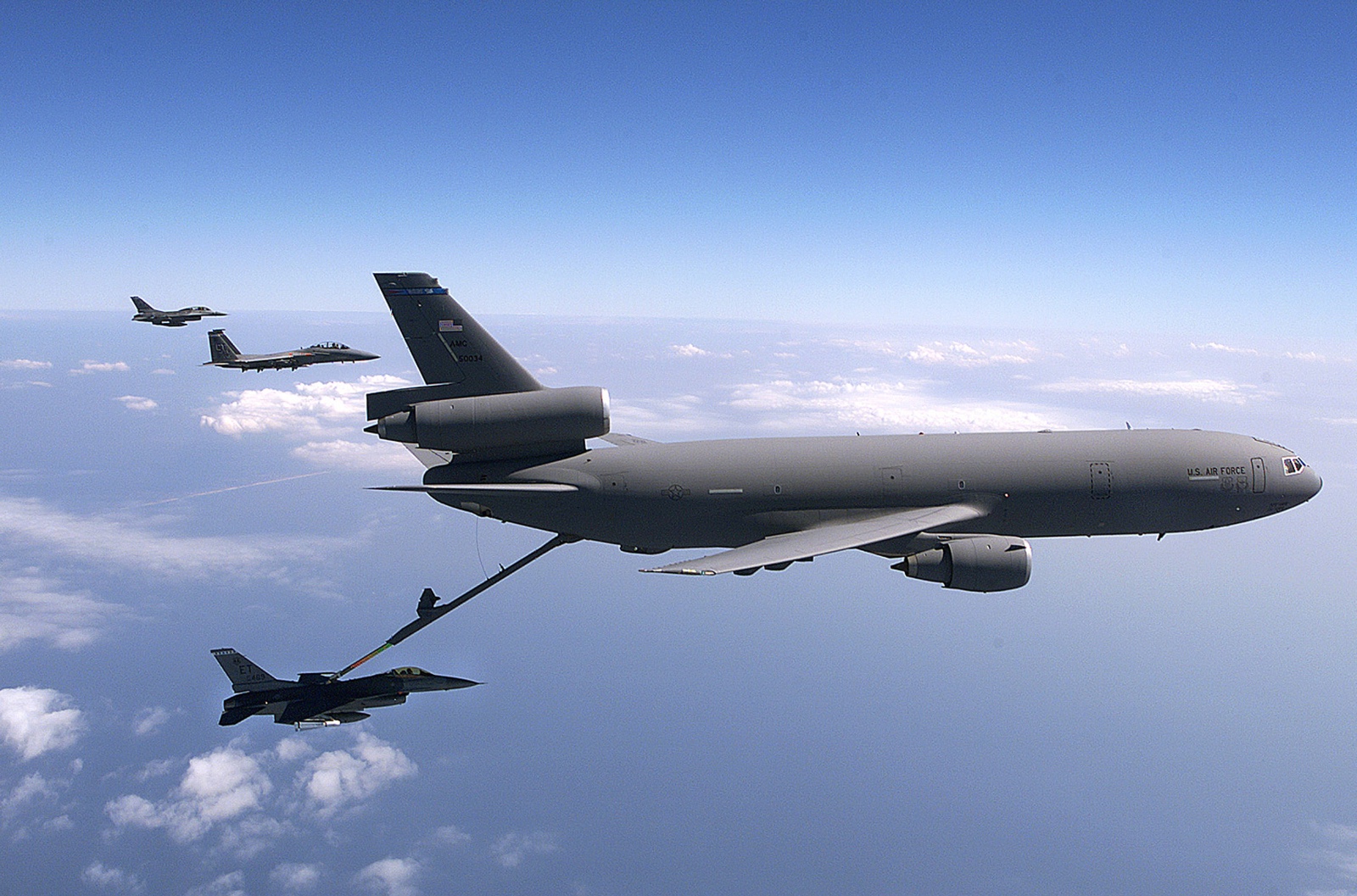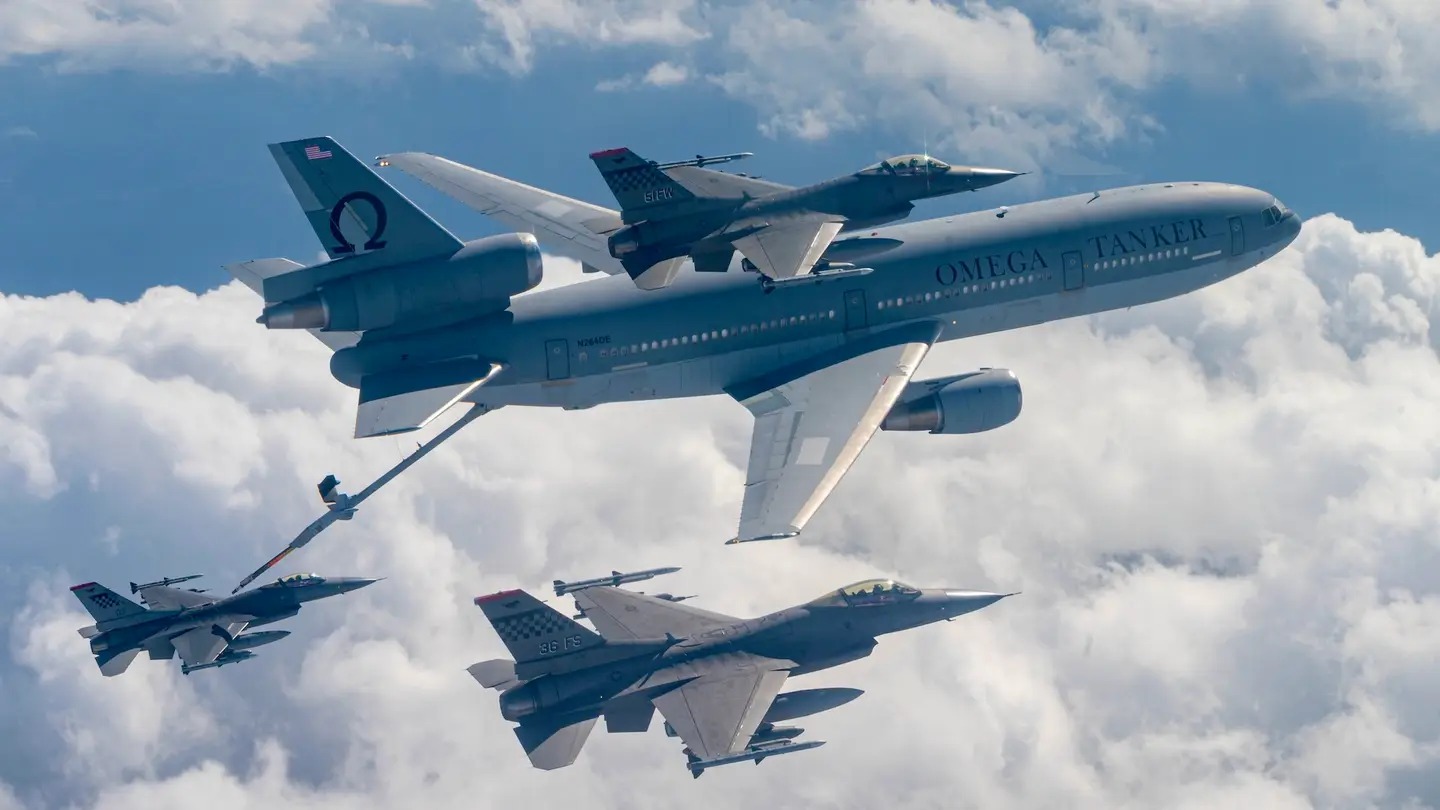The “Big Sexy” Extender aircraft was photographed flying a refueling mission over Travis Air Force Base ahead of its long and glorious era of service with the United States Air Force (USAF) coming to an end.
The US Transportation Command (USTRANSCOM) published photos of a KC-10 Extender from Travis Air Force Base (AFB) refueling a C-5M Super Galaxy and KC-46A Pegasus over California’s coastal waters on September 4.
“As we approach the KC-10’s divestiture in Sept 2024, we salute its decades of service since 1981,” the Command wrote on X (previously Twitter), with a message that the decommissioning of the aircraft would be the “end of an era.” The message has triggered speculation that this was the last flight of the aircraft over its home base.
For many years, the US Air Force’s KC-10 Extender has been a reliable workhorse in its fleet, functioning as an essential part of the AFCENT (U.S. Air Forces Central) Area of Responsibility (AOR) and overseas power projection capabilities of the USAF.
Since entering service in 1981, the enormous aircraft has been a true multi-mission platform, serving not just as an aerial refueler but also as a means of transporting passengers and goods.
The Extender will be decommissioned in a two-day event later this month from the 60th Air Mobility Wing, which is the last to host the aircraft. Team Travis is poised to embark on a new era in air-to-air refueling as the KC-10’s mission concludes and it is replaced by the KC-46A Pegasus.

Earlier this year, Col. Jay Johnson, 60th AMW commander, said, “As a KC-10 flyer myself, it has been amazing to watch the global impact this aircraft has had. The Ten will continue supporting the mission right up until her last flight. As we take the time to appreciate the legacy and history of the KC-10, we also have an opportunity to look forward to the future of tanker operations. I am excited to watch the same sense of pride and community build as we transition to the next generation of tanker operations.”
The KC-10 has refueled a significant number of tactical aircraft and other tactical transport aircraft during ferry flights.
For instance, during Operation El Dorado Canyon, the US deployed F-111s stationed in the UK to attack Libya following refusals from continental European countries regarding overflight and basing permissions. 29 F-111s and other Air Force and Navy aircraft could not have reached their destination without refueling, a job accomplished by the KC-10s and KC-135s.
The KC-10 played a crucial role in Operation Desert Storm and Shield of 1991, facilitating the deployment of transport, strategic, and tactical aircraft to Saudi Arabia. Aerial refueling also played a crucial role in the early phases of Operation Desert Shield.
The Extender, often called “Big Sexy,” has spent 42 years in the military, performing humanitarian and combat missions. In October, it completed its last combat sortie before being released from service at Prince Sultan Air Base in Saudi Arabia. Travis is the last remaining Extender base after the final KC-10 departed the US East Coast in 2023.

Air Refuellers Are Silent Killers
U.S. Air Force Maj. Joseph Rush, 908th EARS commander, led the last combat operations squadron to deploy with the legendary aircraft.
“The KC-10 has been the anchor of air refueling in the AOR since Desert Storm,” said Rush. “Thousands of Airmen have deployed to support KC-10 combat operations [and] to be here at the culmination of that legacy is a privilege. We hope to honor the service [of] the aircraft and, more importantly, the people who dedicated months and years of their lives employing it.”
Explaining the strategic importance of a refueller aircraft, Rush emphasized, “The ability to refuel another aircraft in the air allows for that aircraft to stay airborne longer and extend its capabilities across vast distances…For a fighter, aerial refueling can take a 2-hour unrefueled flight time and turn it into an 8-hour combat mission. That translates to uninterrupted Close Air Support coverage for coalition troops on the ground or Defensive Counter Air coverage to high-value airborne assets in a combat zone.”
It is noteworthy that while combat jets often take credit for conducting long-range strikes and bombing missions, it would be nearly impossible to do so without the help of a mid-air refueller due to the challenges and vulnerabilities associated with making a pit stop for refueling at an air base closer to the adversary.
Current advancements in intelligence, surveillance, and reconnaissance (ISR) through satellite technology provide comprehensive data regarding a permanent airbase, and modern armaments possess the ability to execute global attacks with remarkable precision.
So, making a stop at a friendly nation’s air base closer to the frontline is riddled with threats. Moreover, not all strike munitions can be intercepted by the most robust air defense systems, which means they can inflict significant damage.
So, the deployment of fighter and bomber aircraft at air bases situated nearer to the combat zone or using these bases for refueling operations close to the frontline poses significant risks to the aircraft.
However, the considerable distance from the frontline necessitates the involvement of tanker aircraft to facilitate the journey. Air refueling increases the combat aircraft’s speed, range, lethality, and flexibility by acting as a force multiplier. Most modern combat aircraft depend on the refueling tanker, often an underdog in long-range combat missions.
Sometimes, Air Forces make use of refueller aircraft to hit targets in what they refer to as “self-defense.” This was demonstrated recently when the Israel Air Force (IAF) conducted a very long-range bombing of a target inside Yemen.
It was the first-ever attack carried out by the IAF on Yemen territory, which was perceived by analysts as a direct message from Israel that it was ready to launch long-range strikes against its enemies. In the aftermath of the strike, a plethora of photos and videos were published on the internet. At least one of them showed the F-35I Adir with a refueling tanker.
🚨🇮🇱ISRAEL: LOOK AT THE COOL PLANES WE USED TO BOMB YEMEN…
The IDF released images and videos of F-15 fighter jets being prepared ahead of the strike in Yemen.
The attack also involved Israeli F-35 fighters, refueling planes, and reconnaissance aircraft.
Source: Times of… pic.twitter.com/Jw3eaBeiYy
— Mario Nawfal (@MarioNawfal) July 20, 2024
Earlier this year, a video published by the Chinese People’s Liberation Army Air Force (PLAAF) showed a very rare refueling of seven J-10C Fighter jets by a single YY-20 refueling aircraft in a stunning display of PLAAF’s might. The J-10C aircraft were on their way to participate in the World Defense Show in Saudi Arabia.
The deployment of tanker aircraft has been recognized as essential for any forthcoming conflict involving the United States, particularly in a possible confrontation with China.
China's People's Liberation Army (PLA) Air Force released a video clip showing the rare scenario of a YY-20 aircraft refueling seven J-10 jets in the air. pic.twitter.com/rd5KavVuZy
— Ariel.(互fo💯) (@ArielJi666) January 31, 2024
Despite China’s anti-access/area denial (A2/AD) capabilities, US fighter jets and bombers will play a crucial role in a potential conflict between the two militaries.
Experts have cautioned that since these bombers rely heavily on refueling aircraft or tankers, the Air Force needs to give top priority to improving the capabilities and capacity of its air refueling fleet.

Therefore, USAF officials are experimenting with expanding mid-air refueling. For instance, in November 2023, the USAF performed the first in-flight refueling of fighter jets—specifically, F-15Cs, F-16s, and F-22s—using a commercial tanker.
Notably, the KDC-10 demonstrated its versatility by refueling not only F-16s but also US Air Force F-15C Eagles and F-22 Raptors during the journey, highlighting the collaborative and comprehensive nature of the operation.
The USAF is also working to enhance the survivability of its tanker fleet. Last year, the service initiated the Next-Generation Air-Refueling system initiative. Formerly called KC-Z, the program places a strong emphasis on an aircraft’s ability to operate from unprepared airfields and survive in contested areas.
Against that backdrop, it is safe to say that while fighter jets and bombers take out their enemy, they are supplemented greatly by refueling aircraft, which operate as the “silent killers” behind successful bombing operations.
- Contact the author at sakshi.tiwari9555 (at) gmail.com
- Follow EurAsian Times on Google News




